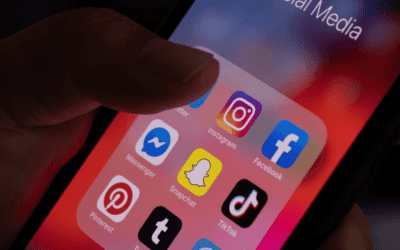Messaging apps have become a core part of our daily communication, and with advances in technology, their role continues to evolve. From WhatsApp’s massive user base to Telegram’s emphasis on privacy, these platforms are leading the way in reshaping how we connect. But as we look to the future, what can we expect from messaging apps? Here’s a glimpse at how these apps might evolve in the coming years.
1. Increased Integration with Other Services
Messaging apps are no longer just for chatting—they’ve become hubs for various services. With the rise of social commerce, payment features, and the integration of shopping directly within apps, platforms like WhatsApp and Facebook Messenger are offering more than just messaging. In the future, expect deeper integrations with services like shopping, gaming, and banking. Apps will transform into all-in-one hubs for communication, transactions, and entertainment, as they cater to the growing demand for convenience and speed.
2. Enhanced Privacy and Security Features
Privacy has become a central concern for users of messaging apps, especially in light of rising data breaches and surveillance concerns. Apps like Telegram have already gained popularity for their emphasis on encryption and privacy. In the future, we can expect even more advanced security protocols, such as end-to-end encryption becoming the standard, alongside innovations like disappearing messages, self-destructing content, and secure voice/video calls. Expect messaging platforms to continue to prioritize user safety, particularly as the digital landscape becomes more regulated.
3. Artificial Intelligence Integration
AI-powered features are becoming commonplace, and messaging apps are no exception. We are already seeing the introduction of chatbots, smart replies, and language translation tools. In the near future, AI will enhance user experience through personalized recommendations, better automatic translations, more advanced bots, and even predictive text to help you craft messages faster. AI will also play a role in moderating content, ensuring that users engage in a safe environment.
4. The Rise of Video and Voice Communication
Text messaging is no longer the only mode of communication. The rise of video calls and voice messaging has led messaging apps to adapt. In the future, we can expect these features to be enhanced with virtual reality (VR) or augmented reality (AR), allowing users to interact in even more immersive ways. Imagine virtual meetings within your messaging app, where you can interact with colleagues or friends in 3D spaces, making the experience feel like an in-person conversation.
5. Cross-Platform Functionality and Interoperability
One of the major challenges facing messaging apps is the lack of cross-platform compatibility. Many people use a combination of apps—WhatsApp, Telegram, Facebook Messenger, iMessage, and more—depending on the network of their contacts. The future of messaging apps could see more emphasis on interoperability, with users being able to communicate seamlessly across different platforms, regardless of the app they are using. This shift would allow messaging apps to evolve into more universal, global communication tools.
6. Augmented Reality and Virtual Messaging
Looking even further ahead, messaging apps could embrace augmented reality (AR) and virtual reality (VR) as the next frontier. Imagine being able to send virtual greetings or gifts in 3D, or even have immersive video chats with family and friends in a virtual space. This could revolutionize the way we think of messaging, turning it from a simple text exchange into a more dynamic, interactive experience.
7. Messaging Apps as Business Hubs
As businesses continue to adapt to digital transformation, messaging apps will serve as essential tools for customer support, sales, and marketing. Companies will be able to use messaging apps to communicate with customers in real-time, answer queries instantly, and manage transactions all within the same platform. This “one-stop-shop” for customer communication is poised to become a dominant model, especially with the integration of AI chatbots and automated responses.
Conclusion
The future of messaging apps is bright, and we’re only scratching the surface of their potential. With a greater focus on privacy, integration with other services, and the adoption of AI and immersive technologies like AR and VR, messaging apps will continue to transform how we communicate, both personally and professionally. Whether you’re chatting with friends, conducting business, or shopping, these platforms will increasingly be a central part of our digital lives.




